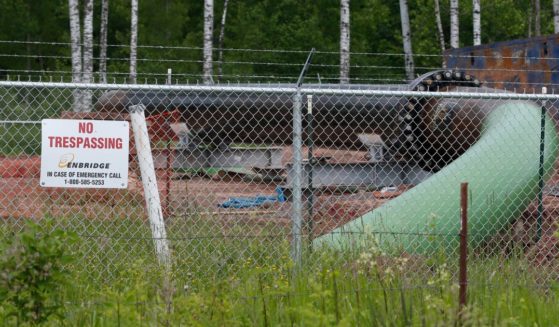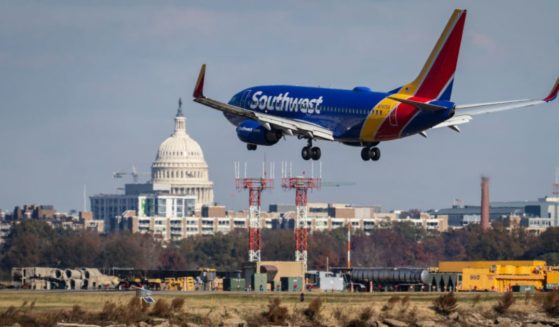Despite big plans, N. Korea's trains still go almost nowhere
TOKYO (AP) — North Korean leader Kim Jong Un’s decision to take a train to his summit with President Vladimir Putin in Russia’s far east hints at the potential of a much bigger dream long held by many in Asia: unimpeded travel by rail from the southern tip of the Korean Peninsula to Moscow and beyond.
The economic benefits range from linking big, thriving markets and bolstering regional cooperation to slashing costs and travel durations. But with sanctions and distrust standing in the way, it could be a very long time before any trains working their way north from Seoul will be passing through Pyongyang Station.
After a day of talks Thursday, Kim boarded his trademark green-and-yellow carriage for the trip back across the two countries’ shared border and on to Pyongyang, a journey Kim can apparently make in under a day. That’s less than a third the time it takes for normal North Koreans to get to the border — longer if there are breakdowns and power outages, which aren’t uncommon.
For North Korean leaders, cross-border train travel is the norm.
Kim’s father and grandfather used trains extensively during their years in power. Kim Il Sung, the country’s “eternal president” took his special train to China, the Soviet Union and on through eastern Europe in 1974. Kim Jong Il rode the rails to Moscow in 2001.
Kim Jong Un has also taken trains for his summits in Beijing and Hanoi.
But aside from a well-worn link with Beijing, the use of North Korean railways for trade or tourism has never been particularly smooth — a situation South Korea, in particular, has long wanted to rectify.
Big-ticket rail projects were a key part of the South’s “Sunshine Policy” of engagement with the North from the late 1990s until 2009, when the North conducted a nuclear test that sent relations into a rapid downward spiral. Just four years later, former President Park Geun-hye made a “Eurasia Initiative” one of her key goals, with a plan for what she called the “Silk Road Express,” which would connect South and North and continue on to Europe through Russia and China.
She didn’t get very far with the project — she was impeached and sentenced last year to serve 24 years in prison for bribery, coercion and abuse of power.
Moon Jae-in, the current president, has once again taken up the mantle.
In his first summit with Kim, in April last year, he laid out a $35-billion project for a high-speed train linking Seoul to Pyongyang and going farther north to Sinuiju, an important trade hub on the Chinese border.
Moon has made it clear he sees the establishment of road and rail links with the North as a potentially lucrative proposal because it would open the way for the cheap and relatively fast transportation of goods and people. Seoul argues the policy is also smart diplomacy — such links would encourage regional economic integration with China and Russia, giving both a stronger reason to cooperate in efforts to improve the political situation on the peninsula.
Russia appears to agree, though it is less enthusiastic about making big commitments.
It invested about $340 million to renovate a 54-kilometer (33-mile) stretch of railway that connects the North’s Rajin special trade zone and port with the Russian town of Khasan. The work was completed in 2013 and 40,500 tons of Russian coal were sent via rail to Rajin port for transport on a Chinese-flagged ship to Pohang, in South Korea, in the summer 2014.
Moscow announced a $25 billion plan to modernize 3,500 kilometers (2,200 miles) of railways in the North, or half its total, that same year. Experts point out the plan was more of an estimate of likely needs than a commitment to actually cover that cost.
Along with the costs of revamping the North’s dilapidated rail system, however, the political climate in Washington remains a big hurdle.
The Trump administration maintains that sanctions must stay in place until Kim commits to denuclearize his country.
During a period of greater detente, the Koreas started freight services between the South’s Munsan Station and the North’s Panmun Station in 2007. The South used the trains to move construction materials north, while clothing and shoes made at the factory park were sent south.
But the line was cut in November 2008 due to political tensions over North Korea’s nuclear program.
For the first time since then, a South Korean train rolled into North Korea last November to begin a weeklong rail survey. South Korean officials traveled to North Korea by train the next month to attend a groundbreaking ceremony for a joint project to modernize the North’s railways and roads and connect them with the South.
Beyond on-site reviews and ceremonies, however, the U.S.-led sanctions make it virtually impossible for the ambitious project to begin in earnest.
Merely traveling to the groundbreaking ceremony required a special exemption from the U.N. Security Council because it involved South Korean transport vehicles and goods.
___
Talmadge is the AP’s Pyongyang bureau chief. Follow him on Twitter and Instagram: @EricTalmadge
The Western Journal has not reviewed this Associated Press story prior to publication. Therefore, it may contain editorial bias or may in some other way not meet our normal editorial standards. It is provided to our readers as a service from The Western Journal.
Truth and Accuracy
We are committed to truth and accuracy in all of our journalism. Read our editorial standards.












